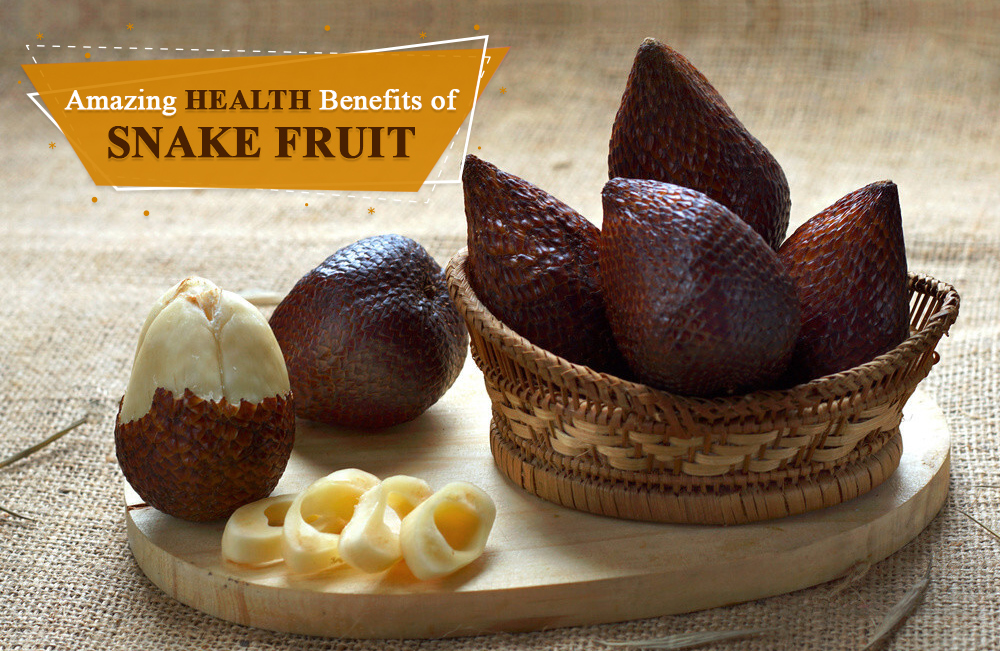The Salak Or Snake Fruit: An Amazing Fascinating Fruit
For many people, eating something called snake fruit may not seem appealing, but salak is a trendy fruit in some world sections. With its increasing popularity and availability crossed the globe, it’s important to know the nutritional makeup of salad, its possible health benefits, and the right steps to eat this unusual fruit.
With its hard brown scales, the salak has the unpleasant appearance of snakeskin. Yet this fascinating fruit typical of Southeast Asia is sour, juicy, and sweet together, in a word, delightful! We invite you to explore the origin and properties of the extraordinary snake fruit.
What is Salak?
Salak is the name of a palm tree belonging to frames of Indonesia and members of the South Pacific. These trees are planted for their fruits, which are found centered near the tree’s base, and have a different red and scaly exterior, which has gained the nickname Snake Fruit. These fruits are only the size of a fig and seem like a large clove of garlic when uncovered.
It can peel off its rugged outer texture by pinching one end. Inside, three lobes, two or three of which include large seeds. The taste is slightly sour, and the surface is similar to that of apples. There are three principal cultivars of salak on the market, with gula pasir being the most valuable and sought after. Salak can also be made into alcoholic beverages of quality, like a wine made from grapes.
Each fruit includes an offensive seed, but the flesh enclosed is eaten for its sweet and often astringent taste. This amazing flavor makes salak a widespread ingredient in various cultural dishes in the South Pacific and encompassing areas. There are over 30 cultivars of this fruit, but most have a similar nutritional profile, although their taste and astringency level are slightly different.
Salak Nutritional Information
Salak is a fabulous fruit to join into your food for its flavor and its nutrient content, including protein, sugars, potassium, phosphorus, vitamin C, dietary fiber, iron, calcium, and vitamin A as well. Add more romance in your life with fildena or vidalista 60. As many antioxidants and active components. There are only 82 calories in a 100-gram portion of salak consisting mostly of carbohydrates, 4% fat, and 1% protein. It also suggests that it has a low impression on your overall calorie consumption.
Where does it grow?
The salak is the fruit of a tiny, very thorny palm tree also termed “salak.” This palm refers to the Arecaceae family, and its herbal name is Salacca zalacca.
Although its origin lives unknown, this palm is a typical sort of Southeast Asia. It grows in Java and Sumatra, cultivated mainly in Malaysia, Thailand, and Indonesia.
Sometimes dragging, it can rise to 6 meters high.
The fruits start at the base of the palm tree, in small groups.
What does it taste like?
Those who have had the possibility to eat salak match its taste to that of pineapple due to the difference between sweetness and sharpness, coupled with the fact that this fruit is very delicious.
After the sweetness, the acidity comes and stings your tongue.
In short, this exotic fruit not only seems fantastic, but it also has a flavor deserving of discovery!
If you get the opportunity to taste it, don’t be set off by its bizarre form, but take care when tasting as this exotic fruit contains one kernel the size of a nut.
Health Benefits of Salak
Enhances memory
Gratitude to the minerals and active components in this fruit, such as beta-carotene, potassium, and pectin, this fruit can grow blood flow to the brain, promoting cognition and improving memory. It also supports to eliminate oxidative stress and decrease the chance of neurodegenerative disorders.
Increase power
Studies have confirmed that salak can improve stamina and boost metabolism, which can increase your energy. The carbohydrates in this fruit are also effective in keeping energy levels during the day.
Weight loss
There is a high level of dietary fiber in salak, which is great for increasing fullness sensations and avoiding undesirable snacking and overeating. Tadalista and vidalista 40 are best pills to treat ED fast. It also increases digestive power and excludes symptoms of bloating, constipation, and cramps.
Improves heart health
The potassium found in salak benefits lower your blood pressure because potassium is a vasodilator. This means that it can decrease the tension in the blood vessels and arteries, which decreases the overall pressure on the cardiovascular system.
Protects vision
Beta-carotene is one of the antioxidants in salak, which has an immediate link with visual health. Getting sufficient beta carotene in your diet can reduce your chance of macular degeneration and slow the progression of cataracts as you age.
Manages diabetes
This fruit’s high fiber nature gives it excellent for controlling blood sugar levels in the body required for diabetic patients. There is a decent amount of carbohydrates (simple sugars) in this fruit, but the fiber counteracts these results and stops the spike in blood sugar, alleviating the pancreas’ strain.
Reduces heartburn
Salak has traditionally been applied as a heartburn treatment by many indigenous people in Asia who have examined it as a vital part of their diet for hundreds of years.
How to eat salak or snake fruit?
Eating this fruit can be a daunting job considering its look and texture, but making and eating salak is simpler than you might expect. With an apple-like consistency in form, this fruit is not only pleasant to prepare but delicious to eat!
